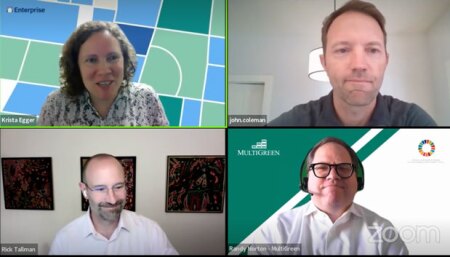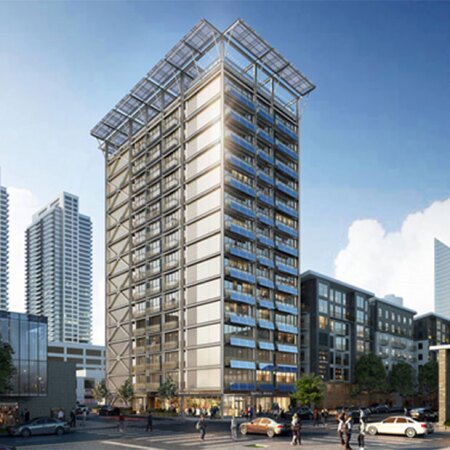During the 2022 ULI Housing Opportunity Conference, a panel discussion on “Getting Residential to Net Zero” began with real estate professionals sharing profiles of net zero projects, followed by a passionate discussion on the urgency to get real estate to net zero.
Krista Egger, vice president of national initiatives with Enterprise, posed the question, “What is important about net zero housing, [and] what matters to you about this approach?” The common motif in the panelists’ answers was climate change, resilience, and a strong business case. Rick Tallman, executive vice president, special projects with Sustainable Living Innovations emphasized, “from a business perspective, we build zero net energy housing because you make more money doing it.” He continued, “We honestly see affordability as a part of sustainability, in that sustainability is a pathway to affordability and that affordability is a key component to maintain a sustainable housing stock.”
John Coleman, regional director, of Entegrity Energy Partners showcased his organization’s headquarters, a mixed-use space, in Fayetteville, Arkansas. The project is simple from an architectural and financial standpoint, an intentional choice to demonstrate that net zero projects don’t need to be complicated. The building features Entegrity’s office as well as 28 apartments that are rented below market rate, which is made possible due to the energy savings. The crown jewel of the building are the solar panel awnings, which outline the large windows. The building has achieved net zero by maximizing lighting and temperature control, utilizing passive design strategies, and developing its solar roof and awnings. These features allowed the asset not only to have extremely low energy costs—about $9,600 a year for the 24,488 square foot (2,271 sq m) building)—but also to qualify for several financial incentives. Coleman said, “You don’t think about Arkansas as the bastion of sustainable development, so if we can do it here, there’s a general thought that you can do it just about anywhere.”

Clockwise from top left: Krista Egger, vice president of national initiatives, Enterprise Community Partners; John Coleman, regional director, Entegrity; Randy Norton, founder and chairman, MultiGreen Properties; and Rick Tallman, executive vice president, special projects, Sustainable Living Innovations, speaking at the 2022 ULI Housing Opportunity Conference.
Tallman discussed his company’s strategy, which is grounded in building with prefabricated room panels, shortening construction periods and reducing energy use by simplifying the process and integrating technology into the building itself. The trophy property of Sustainable Innovation Solutions’ portfolio is 303 Battery in Seattle, the world’s first net zero energy multifamily tower. 90 percent of 303 Battery’s 112 units are priced at a rent attainable for middle-income households. The advanced technologies that allow 303 Battery to be net zero energy and affordable include lithium-ion battery storage, greywater treatment, waste heat recovery, a low voltage electrical system, and solar panels. Sustainable Innovation Solutions has other net zero energy projects in the pipeline including a multifamily building in an Opportunity Zone and a transitional living residence. Tallman’s key takeaway was simple: “If anyone tells you that you have to choose between green and affordable, don’t believe them.”
Randy Norton, founder and chairman of MultiGreen, began with his company’s differentiators: “Attainable and sustainable, costs and duration of construction, systematized and standardized, and technology enabled.” Architecturally, many of Multigreen’s properties are garden style, resembling townhomes rather than tall apartment buildings. MultiGreen’s main energy strategy relies on installing hydrogen fuel cell microgrids on properties (Norton featured a multi-prong project in Albuquerque, New Mexico.) Additionally, MultiGreen offers similar affordability with rents targeting 80 percent-120 percent of area median income. Norton framed the approach as “thinking and believing that multifamily is data centers with people in them and we are underwriting and designing them that way.”
To close out the session, panelists delivered calls to action for the ULI audience. Coleman highlighted the role of ULI and the U.S. Department of Energy’s Better Buildings Challenge as resources on decarbonization and emphasized that making the net zero commitment early in the design process is crucial. Tallman added that Sustainable Living Innovations could not do their work without partners that buy into this vision and urged developers to “push your engineers and don’t take no for an answer.”





